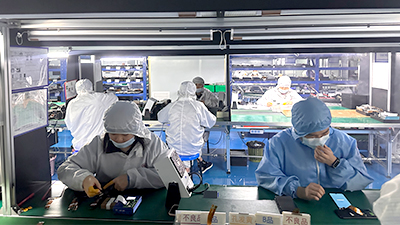
True Tone comprises a feature crafted by Apple to balance display shades under external light. As a result True Tone permits devices to present faithful and sharp color irrespective of ambient brightness. A number of users observe greater eye relaxation in long-term interactions with True Tone, thanks to mitigating visual fatigue. This apparatus is part of electronics such as iPhones, iPads, and Macs and it can be controlled for activation or deactivation per user wish.
- Times to observe True Tone impacts are during bright outdoor reading, using a PC in dim surroundings, or nighttime video viewing.
Breakthrough Systems tuning monitors to contexts
True Tone functions as a novel method personalizing screen tones according to location light. It incorporates detectors to measure surrounding brightness and adapts blue hues in real time for a more agreeable screen viewing. This diminishes eye strain and enables better viewing over long durations. True Tone technology is present in numerous gadgets like mobile phones, tablets, and screens.
Cellphone Display contrasted with iPhone Visual: Key Differences
While “mobile device display” and “iPhone screen” might appear synonymous, distinct differences separate Android from iPhone displays . Android displays deliver assorted options for display extent and image resolution, whereas iPhones are distinguished by supreme OLED visual modules. Differences also exist in screen fabrication methods. Certain Android manufacturers employ AMOLED screens while Apple uses mainly LCD and OLED panels in their iPhones.
- Variations manifest distinctly in terms of chromatic fidelity and angular visibility
- Multiple Android models support elevated refresh cycles improving display flow
- Mostly, iPhone displays showcase stronger brilliance
Mechanism Behind True Tone on iPhone Devices
True Tone functions as a tool balancing iPhone screen warmth with environmental brightness. It provides softer visual experience adapted to ambient brightness. When True Tone is activated, sensors in the iPhone detect ambient light and change the screen’s color temperature to be tinted warm in shade and brisk under strong light.
- Besides that, True Tone refines display experience by lowering eye demand
- Control True Tone activation in Settings under Display & Brightness section
Realistic Display Encounter
True Tone allows the display to conform to environmental lighting conditions. This generates a more genuine visual experience, lowering eye exhaustion fostering content viewing at high fidelity.
- Witness chromatic quality that is more precise and intense
- Gain improved sharpness and focus in visuals
- Keep eye strain low during long device use
Does having True Tone matter?
Facing modern technology settings, electronics evolve extensively. One feature gaining popularity is True Tone technology which dynamically adapts screen coloration to surroundings, enhancing the visual experience to be more natural and pleasant. But is having a True Tone display really necessary? The answer depends on how you employ your device and your specific needs.
- Consumers with extended device usage periods recognize True Tone as a great aid to limiting eye fatigue and enhancing comfort
- Alternatively, sporadic users or entertainment-centered ones experience reduced benefits
Overall, True Tone screen worthiness correlates with individual preferences and conditions. If you prioritize a more natural and comfortable viewing experience, this feature is worth considering when selecting your next device.
Advantages and Disadvantages of True Tone Enhancements
True Tone stands as a successful innovation balancing display colors per environment. This can facilitate relaxed perception predominantly over extended screen interaction. However, there are some limitations. Some users find True Tone may be too responsive, causing sudden changes in color temperature.
- Exact color reproduction can be hindered in certain instances
- Not every light environment yields correct True Tone response
By and large, True Tone offers aid to long-duration display utilizers. Nonetheless, it is important to remain aware of its constraints.
Examining Screens with Integrated True Tone
True Tone advances have swiftly influenced digital display perception. This state-of-the-art feature auto-calibrates the color temperature of your display to match surrounding light. In effect, True Tone ensures a more realistic viewing experience, reducing eye strain and upgrading color precision. When evaluating screens with True Tone, consider factors such as visual depth to choose the best option for your necessities.
- Additionally, True Tone can refine image resolution in certain situations.
- But, not all True Tone-equipped displays are the same.
Preferred iPhones with True Tone Displays
If optimal screen perception matters, focus on iPhones including True Tone. This capability modifies color tone according to light, ensuring a relaxed visual encounter. Popular iPhone que es true tone models with True Tone include XR, Pro, Max. These variants offer a collection of features and specifications to meet your needs.
- Reasonable costs are available for iPhones featuring True Tone
- Alongside pricing, True Tone screens aid in protecting user eyesight
Modifying True Tone on Your iPhone
Fine-tuning True Tone on your iPhone can optimize your visual experience by matching display color temperature to ambient lighting. To do this, go to "Settings" > "Brightness and Screen" and permit True Tone. In that same section, you can adjust True Tone levels according to your preferences.
- Take into account that True Tone excels in natural illumination
- Vary parameters to attain visually pleasing results fitting your eyesight
Evaluating True Tone: Genuine Differences in Experience?
Cutting-edge True Tone functions ensure elevated image fidelity. But does it really meet these standards? To review whether True Tone significantly influences the experience, we tried its function across a variety of devices and scenarios.
- Findings shared aid in assessing True Tone’s true utility
Check this study for conclusions on True Tone’s influence on display quality!
